
The Ketogenic diet or keto diet, is a high fat, moderate protein, low-carb diet that stimulates changes in your metabolism known as ketosis, and helps you to burn fat more efficiently. It also has therapeutic applications.
In this ultimate guide you will learn everything you need to know about going keto.
Including the step-by-step processes of how the ketogenic diet works, along with the exact science behind ketosis and the significance of ketone bodies.
I will also be providing in-depth answers to questions such as:
- What can you eat on a keto diet?
- Is a keto diet safe?
- Does keto make you smell?
- Who should not do Keto?
- Plus lots more
So if you want to know how to start a keto diet or if you are simply looking for information about a keto diet plan for beginners, either way, this article is for you.
By the end of it you will have a full understanding of the keto diet rules, enabling you to easily identify keto diet friendly foods and formulate your own keto diet plan (free 7 day keto diet plan also included).
LEARN MORE > DNA Lean Custom Diet Plans (Premium Sports Nutrition)
What is the ketogenic diet?
The ketogenic diet is a way of programming metabolic responses through changes in your nutrition. The word ketogenic, literally means to generate ketones (keto = ketone; genic = generating).
The keto diet was first conceived in the early 1920's by a Dr. Russell Wilder of the Mayo Clinic. Interestingly, the diet was initially designed for the treatment of epilepsy.
Dr, Wilder proposed that a very low carbohydrate diet could bring about the health benefits of fasting without actually fasting.
Today the keto diet is often compared to the whole 30 diet and the paleo diet, however it is distinctly different because it specifically replaces carbohydrates with fats.
Restricting carbohydrate helps to reduce blood glucose and consequently lowers insulin. Carbohydrates (glucose) are ordinarily the body’s primary source of energy.
Therefore consistently eating little to no carbohydrate creates an energy deficit (not a caloric deficit).Your body responds to the lack of energy by changing its metabolism so that it can yield a new energy source in the form of ketone bodies.
This altered metabolic state of ketosis causes your body to rely on the breakdown of fats to produce ketones which are then used to generate energy.
This is why the keto diet can be advantageous for overweight and sedentary people seeking weight loss, because an energy crisis can be induced without the need for exercise.
There are 2 ways to trigger ketosis:
1. Starvation invoked ketosis - Achieved through prolonged fasting or intermittent fasting (IF).
2. Nutritionally invoked ketosis - Achieved by consistently eating very few carbohydrates.
Obviously, fasting is not something that can be sustained. However the ketogenic diet is able to induce fasting-like effects and is therefore a practical way of achieving sustained ketosis without starvation.
When in a state of ketosis your body becomes hyper-efficient at burning fat, and ketone bodies replace glucose as your primary source of energy.
Is the keto diet really appetite suppressing?
One of the benefits you will commonly hear about the ketogenic diet, is that it has the ability to curb hunger. As it happens, this claim is not without credence.
Ketones, through their capability to lower the appetite-regulating hormone ghrelin (1), may actually increase satiety and thus prevent over-eating (2).
Nevertheless, if this is true, it's certainly not the whole truth and nothing but the truth. Satiety is also linked to protein and fibre. So here's the thing, ketogenic diets aren't usually high in protein, and in some cases may even lack in fibre.
Simply eating a balanced and varied diet, rich in fibre and high in protein, can also increase satiety.
What is Ketosis?
Ketosis or ketogenesis is a metabolic pathway for the production of ketone bodies. It simply refers to an altered state of metabolism which is denoted by elevated levels of ketone bodies in the blood and urine that are measured above regular baseline levels.
Nutritional–induced ketosis is a normal and healthy physiological response to an unavailability of glucose caused by fasting or eating very few carbohydrates (50 grams or less per day).
Two metabolic pathways are triggered when glucose availability becomes low; gluconeogenesis and ketogenesis (ketosis).
Gluconeogenesis is the process of creating glucose primarily from degradation of glycerol, lactic acid and the amino acids glutamine and alanine (3).
Ketogenesis occurs after exhaustion of cellular carbohydrate (glycogen) stores and when the endogenous production of glucose through gluconeogenesis is unable to fulfil the body’s energy demands.
The shortfall of glucose and energy triggers ketosis and upregulation of the ketogenic pathway whereby the liver breaks down either fatty acids released from adipose tissue (body fat), or from dietary sources, and synthesises ketone bodies that become readily available as a fuel source.
In fact, your body is continually synthesising small amounts of ketones to be used as energy (4). For example, overnight while you are sleeping, blood levels of ketones increase.
Some amino acids can also be used to generate ketones, which is why ketogenic diets don't usually tend to be overly high in protein. These are known as ketogenic amino acids, of which some are both ketogenic and glucogenic (glucose generating).
Glucogenic and ketogenic Amino acids:
- Phenylalanine
- Isoleucine
- Threonine
- Tryptophan
- Tyrosine
Exclusively ketogenic amino acids:
- Leucine
- Lysine
Leucine and lysine are both exclusively ketogenic and can easily be degraded into acetyl-CoA, the precursor of ketone bodies.
What are ketones?
Ketones are very small molecules comprising of hydrogen, carbon, oxygen, and are primarily synthesised in your liver through the breakdown of fatty acids and ketogenic amino acids.
Beta-oxidation of fatty acids in the liver leads to the synthesis of acetyl-CoA and acetoacetyl-CoA through which ketones are then derived.
Biochemical definition
An organic (carbon-based) compound that contains a group =C=O bonded to two hydrocarbon groups.
The simplest of ketone bodies is acetone followed by acetoacetate, and beta-hydroxybutyrate, respectively.
Every single cell in the human body requires energy in the form of adenosine triphosphate (ATP). Ketone bodies are readily utilised as an energy generating source of ATP by most areas of the body including the heart, kidneys, brain and skeletal muscle tissues.
However, ketones aren't utilised as an energy generating source by red blood cells (RBCs) and surprisingly the liver, despite it being the primary site of ketone production (5).
Energy benefits of ketones

Ketone bodies are sometimes referred to as a “super-fuel”. This is because they are able to produce significantly more adenosine triphosphate (ATP) than glucose.
Ketone capacity for ATP generation (5):
- 100 grams of acetoacetate yields 9’400 grams of ATP.
- 100 grams of beta-hydroxybutyrate yields 10’500 grams of ATP.
Glucose capacity for ATP generation:
- 100 grams of glucose yields only 8’700 grams of ATP.
Ketones allow for more efficient energy production relative to glucose, and can therefore be advantageous during a caloric deficit.
Furthermore, ketone bodies may also have an additional energy benefit for endurance athletes such as long distance cyclists and marathon runners who struggle to consume foodstuffs while competing.
Ketone bodies help reduce oxidative stress and are neuroprotective
Another well-documented health-benefit of energy-generating ketone bodies is that they do not exhibit the same oxidative and inflammatory stress as glucose.
In fact, ketone bodies have been shown to decrease cellular damage and are even known to lower apoptosis (cell death) in neurons and cardiomyocytes (muscle cells of the heart) (6).
Physiologic ketosis Vs ketoacidosis
These two types of ketosis are distinctly different.
Physiologic ketosis is a normal and healthy metabolic state in response to unavailability of glucose where the body’s normal acid-base homeostasis is maintained.
In contrast, ketoacidosis is a pathological state of disease and requires medical intervention. In ketoacidosis the accumulation of ketone bodies becomes uncontrollably high and leads to an imbalance in the stasis of acid and base.
This is referred to as metabolic acidosis whereby your blood becomes acidic.
Ketoacidosis is typically associated with cases of uncontrolled diabetes and is most commonly a result of complete insulin deficiency as seen in type 1 diabetes patients.
What are the different Types of Ketogenic Diets?
For most people not eating carbohydrates can be tough, especially for the first 2 weeks while your metabolism adapts and becomes accustomed to the lack of glucose.
These effects are even more pronounced in athletes who have higher energy requirements and need quick energy during bouts of high intensity exercise, which is ordinarily powered by glucose in anaerobic glycolysis.
Therefore various types of the ketogenic diets have been developed to better suit different individual requirements. However, all keto diets share the same primary goal of ketosis and despite their nuances, they all follow a high fat, low-carb theme.
Here are some different types of ketogenic diets:
Standard Ketogenic Diet (SKD)
Macronutrient ratio: 75% fat, 15-20% protein, 5-10% carbs.
A standard keto is the most basic of all the different types of keto diet, and tends to be high in animal-based foods such as meats, eggs, and dairy. Only low-carb non-starchy vegetables such as dark green leafy and cruciferous veg are allowed.
Collectively, these types of foods are naturally high in fat, high in protein, and low in carbohydrate.
The standard ketogenic diet is also sometimes referred to as the very-low-carb ketogenic diet (VLCKD) and has no limit on the amount of fat that you can consume.
Who is it best suited to? The standard keto diet has become popular with people seeking weight loss or with people who wish to treat epilepsy.
Well Formulated Ketogenic Diet (WFKD)
Many people start out with the intention of eating a ketogenic diet in an effort to lose weight, reduce inflammation and improve insulin sensitivity. Nevertheless, there is far more to a keto diet plan, than just eating fewer carbohydrates.
In fact, a novel version called the lazy keto is just this; that only tracks carbohydrate intake. The problem herein lies, people invariably fall folly to a poorly constructed diet that is too high in unhealthy saturated and trans fat and lacks essential minerals and other important nutrients.
Needless to say the risk of unpleasant side effects and even potential adverse health effects increase.
The well formulated ketogenic diet, is just that; it is well formulated.
The well formulated keto address’s important issues such as fluid and mineral intake that corresponds to the change in requirements associated with keto-adaptation, and thus can significantly reduce or perhaps even prevent symptoms of the so-called “keto-flu”.
Stephen Phinney, MD, PHD is the pioneer behind the well formulated ketogenic diet and designed it to enable sustained nutritional ketosis. Fat provides the majority of dietary energy in all phases.
The WKFD is based around whole and un-processed foods, does not count or restrict calories, offers flexibility, to a degree, on carbohydrate intake, and is designed to preserves lean body mass.
Who is it best suited to? Everybody. In my opinion the criteria of the well formulated and balanced ketogenic diet plan should form the basis of all ketogenic diets.
MCT Ketogenic Diet
The Medium chain triglyceride (MCT) keto diet includes a significant amount of dietary fat from MCT oil supplements, which are added in varying amounts to every meal.
Fatty acids from MCT sources have been shown to produce ketones more rapidly compared to long chain triglyceride (LCT) fats.
Therefore, less overall fat is required, and thus allows for increased carbohydrate and protein consumption.
The MCT keto diet is based on the standard keto diet with 2 main differences.
With the MCT keto, between 30% and 60% of dietary fat intake is in the form of MCT fats.
1. Allows for reduced consumption of fat and increased consumption of protein and carbohydrate.
2. With the MCT keto, all foods are weighed in order to strictly calculate the exact amounts of dietary intake.
Who is it best suited to? People who are looking for more flexibility and who want to eat a larger variety of foods than the standard keto diet allows.
Calorie-restricted ketogenic diet (CRKD)
A calorie-restricted ketogenic diet is based on the same principles of a standard ketogenic diet, but differs in the way that the amount of calories that you are allowed to eat is restricted.
Who is it best suited to? People who want to lose weight and are conscious of how much food they eat.
Cyclical Ketogenic Diet (CKD)
Macronutrient ratio:
Keto days: 75% fat, 15-20% protein, 5-10% carbs.
Non-Keto days: 25% fat, 25% protein and 50% carbs.
Keto-cycling is a way of directing your metabolism to switch in and out of ketosis. Eating carbohydrates leads to an increase in blood glucose and consequently, an increase in insulin.
Ketosis is largely regulated by insulin; when insulin secretion is turned on, ketosis is turned off, and vice versa.
Therefore, cycling carbohydrate intake selectively regulates when your metabolism is in or out of ketosis.
A common way to keto cycle is to eat a ketogenic diet plan for 5 days; Monday – Friday. Followed by 2 days on the weekend where you include carbohydrates back into your meals and enjoy foods from other food groups such as nutritious carbohydrate rich foods, including fruits, starchy vegetables and whole-grains (as opposed to refined and processed sugary foods).
Who is it best suited to? This type of keto diet is often adopted by athletes and bodybuilders who need to replenish glycogen stores while reducing body fat in preparation for competition.
Targeted Ketogenic Diet (TKD)
Macronutrient ratio: 65-70% fat, 20% protein, 10-15% carbs.
The targeted keto diet allows for a small amount of carbohydrate to be consumed both pre and post-workout.
This is because the glucose is quickly used up as energy demands increase during your workout. Therefore the carbs don't get deposited as body fat.
Who is it best suited to? The targeted ketogenic is better suited to athletes and people who are active.
High Protein Ketogenic Diet (HPKD)
Macronutrient ratio: 60-65% fat, 30% protein, 5-10% carbs.
A substantial amount of people claim that the high protein keto diet is easier to follow. Nevertheless, depending on your particular protein requirements, it is possible that you may exceed them on this diet.
The significance of eating protein surplus to requirement is that the extra protein can be converted to glucose and therefore may hamper ketosis.
Who is it best suited to? Athletes, or anyone who engages in regular exercise. This is because individuals who are active generally have higher protein requirements than sedentary people.
The Atkins diet
Dr Robert Atkin was an American physician and cardiologist. He was one of the early pioneers of the low carbohydrate, high fat diet, which he aptly named; the Atkin's diet. He promoted the idea that you could lose weight by eating more fat.
Today the Atkin’s diet follows 4 different phases, whereas ketogenic diets promote just one way of eating. Nevertheless, the Atkin’s diet still focuses on eating more fat along with being very low in carbohydrate.
What can you eat on a keto diet?

There are many foods that are keto friendly, that is very low carbohydrate foods that do not have an insulinogenic effect. In fact, it is not uncommon for foods that are super high in saturated fat and even trans fat, to be described as being keto-friendly.
While that may be true, it is not necessary to eat exuberant amounts of saturated fat, including foods such as processed meats (salami, hotdogs) streaky bacon with added sugar, and cheeses. These foods should be kept to a minimum.
Aim to eat the best quality food that contain good fats that promote good health. Eating a low-carb keto diet should not be used as justification to eat copious amounts of unhealthy fat.
The ketogenic diet is not generally considered a vegetarian diet because high protein meats and poultry are staple foods.
Keto diet rules to help you identify keto friendly foods
Generally speaking root vegetables that grow below the ground contain more starches and carbs than non-root vegetables, especially potatoes and sweet potatoes. Therefore most root vegetables are not a keto friendly.
Rule 1: Opt for veggies that grow above the ground as these are typically very low in carbohydrate.
Rule 2: Any food that contains 6 grams or less of net carbs (total amount of carbs minus fibre) is keto friendly.
Here are some healthy keto friendly foods that you should include into your meal plan.
Keto friendly vegetables:
- Artichokes
- Asparagus
- Aubergine/egg plant
- Avocados
- Broccoli
- Brussels sprouts
- Cabbage
- Cauliflower
- Celery
- Collard greens
- Cucumbers
- Green beans
- Kale
- Lettuce
- Mushrooms
- Okra
- Olives
- Radishes
- Spinach
- Swiss chard
- Tomatoes
- Turnips
- Zucchini/Courgette
Organic pastured/grass-fed meats:
- Chicken
- Lean ground beef
- Lamb
- Pork/ham
- Beef steak - particularly fillet steak
- Turkey
Wild Seafood (non-farmed):
- Oily fish: Salmon/mackerel/trout/pilchards/sardines
- White fish: Cod/hake/haddock/Pollock/sea bass/tuna
- Clams
- Mussels
- Oysters
- Squid/Octopus
Keto friendly fruits:
- Raspberries
- Blackberries
- Strawberries
- Watermelon
Additionally, free range organic eggs and cottage cheese are both great choices for your keto diet plan.
Moderate amounts of nuts and seeds such as almonds, chia seeds, flax seeds, macadamia nuts, pumpkin seeds, and walnuts are all ok too. However the latter items tend to have higher carbohydrate content.
Ultimately no one single food or recipe has to be off your menu or grocery list. Education is key to understanding the nutrient content of food, which is crucial to your success.
You can also cross-reference the composition of food with the McCance & Widdowson dataset.
What fats should I eat on keto? (The good, the bad and the ugly)
Because you eat more fat on a ketogenic diet, it is important to make sure that you don’t over-eat fats that are bad for your health.
Fats are biologically active molecules that serve many functions, including forming healthy cell membranes (phospholipids), facilitating the absorption of fat-soluble vitamins A, D, E & K, lubricating your joints and reducing inflammation.
The good fats
Some fats are essential, that is your body cannot endogenously synthesise them and therefore must be supplied through dietary sources. These types of fats literally are essential for your body to sustain itself.
Omega 3 & 6 fatty acids, Linoleic acid and Alpha-linolenic acid, respectively, are essential fats and are your keys to good health and longevity. Your body can manufacture all manner of different fatty acid structures from these 2 parent fatty acid structures.
For example, the omega 3 fatty acid Eicosapentanoic acid (EPA), commonly found in fatty fish can be endogenously synthesised from Alpha-linolenic acid.
However, these essential fats are highly reactive and readily oxidise in the presence of heat, light and air. This is why you CANNOT cook or fry with vegetable oils.
Frying with oil changes the molecular structure of the fatty acids, which then become denatured (damaged). Because cell membranes are made of fatty acids, consuming denatured fats can cause cell membranes to leak. This can only result in cellular chaos and overall bad health.
Rather than frying and cooking with oil, spoon healthy oils such as flaxseed over your food after it is cooked.
Omega 3 fats stimulate fat burning
Long-chain omega-3 polyunsaturated fatty acids (PUFA) provide more energy per gram than MCT’s, and are the equivalent of a ferrocerium rod to a fire-starting kit in bush craft.
Omega 3 basically invokes changes in gene expression which shift metabolism toward enhanced fat oxidation and reduced fat deposition (7).
You can increase your fat intake on keto by including foods from the sources below into your diet.
Keto healthy fats list:
- Udo’s omega 3,6,9 health oil
- Avocado and avocado oil
- Non-farmed fatty fish such as salmon & mackerel
- Olives and cold pressed olive oil
- Nuts: macadamia, walnuts, and brazil nuts
- Seeds: pumpkin, flaxseed/linseed, and chia seed
- Organic pastured eggs
The bad fats
Saturated fats, due to their carbon chain of saturated double bonds, are long and straight molecules that serve no biological function other than being available as a fuel source.
Saturated fats are generally solid at room temperature and only liquefy when heated. When you eat saturated fats that have been cooked, they cool and congeal inside your body.
This can lead to accumulation of fatty deposits in arterial tissues and cause problems in your cardiovascular and circulatory system (8).
Lots of healthy foods contain small amounts of saturated fat. On a ketogenic diet you do not need to avoid all saturated fat because these fats provide your body with fuel. However it is important to get the right balance of fats.
Contrary to popular keto-belief, lard, cream, cheese and butter, although keto-friendly, are a far cry from being health foods. They will not enhance your health. These foods are loaded with saturated fat and if included in to your diet, should be used sparingly.
The ugly fats
The worst fats for health are trans fats (partially hydrogenated fats). The negative health effects of trans fats are well-documented and are a risk factor in cardiovascular disease, diabetes, colon cancer and obesity (9).They should be avoided at all costs.
Trans fats are often found in produce such as pastries, cakes, processed meats, vegetable shortening and deep fried foods.
What foods should you avoid on a keto diet?
Here is a list of high carbohydrate/sugar foods that are all non-keto-friendly. You avoid eating these foods while in ketosis.
Dairy:
- Milk - both dairy and soya/oat/almond milks etc
- Condensed milk
- Sugar-sweetened yogurts/fruit yoghurts
Drinks:
- Beer
- Coca cola
- Cocktails/Mocktails
- Energy drinks/sports drinks
- Fruit juices
- Generic carbonated and sugar sweetened beverages
- Hot Chocolate
- Lemonade
- Soda/root beer/ginger beer
- Sweetened iced tea
- Frappuccino
Fruits:
- Apples
- Bananas
- Dried fruits
- Grapes
- Mangos
- Nectarines
- Oranges
- Peaches
- Pears
- Pineapples
- Tangerines
Grains:
- Barley
- Corn
- Buckwheat
- Oats/Oatmeal
- Quinoa
- Rice
- Rye
- Sandwich wraps/tortilla wraps
- Sourdough
- White Flour/bread/bagels
- Wheat
Legumes:
- Baked beans in tomato sauce
- Black beans
- Black-eyed peas
- Cannellini beans
- Chickpeas
- Kidney beans
- Lentils
- Lima beans
- Pinto beans
- Navy beans
Vegetables:
- Butternut squash
- Carrots
- Cassava
- Corn
- Parsnips
- Peas
- Potatoes
- Sweet potatoes
- Yams
Supplements for a Ketogenic Diet
Here is a list and brief overview of some food supplements that are commonly taken by people who follow a ketogenic diet.
MCT Oil
MCTs are more readily absorbed and oxidised than most lipids and do not require carnitine for transport into the mitochondrial matrix (10). Therefore MCTs are highly effective at generating ketone bodies and can be effectively used when on a keto diet to help boost energy levels.
Medium chain triglycerides molecules are classified by the length of their carbon chains; 6-12 carbon atoms. MCT oils are derived from coconut or palm sources and typically contain a mixture of MCT’s. These are:
- Caproic acid (C6)
- Caprylic acid (C8)
- Capric acid (C10)
- Lauric acid (C12)
Although MCTs provide your body with a source of energy, they do not encourage energy production from fat burning like Omega 3 fatty acids do (11).
Pro Tip – If you find that your workouts are a little lacklustre, try supplementing with a tablespoon of MCT oil prior to exercise.
Exogenous Ketones
Exogenous ketones are available either as a salt or ester form and are very popular in the keto community.
However, the evidence to suggest that exogenous ketone supplements are efficacious in increasing fat loss is still lacking. On the contrary, the current understanding is that they likely inhibit fat burning.
Here’s why:
The human body has a complex array of feedback mechanisms that allow it to efficiently manage and regulate metabolism.

Nutritional-induced ketosis lowers insulin and consequently increases glucagon & cortisol (12). These catabolic hormones stimulate the release of free fatty acids from the breakdown of body fat (Points 1, 2 & 3 on the flow-chart).
Subsequently, free fatty acids are metabolised by the cells of the liver to generate endogenous ketone bodies that can be used as an energy source (Points 4, 5 & 6 on the flow-chart).
This process of ketone generation from the degradation of body fat is regulated by a negative feedback cycle. That is, when levels of ketone bodies become elevated, their production is down-regulated, and vice versa (13).

It's an efficient self-regulating energy management system.
Exogenous ketones provide your body with a direct source of energy, which when elevated, means that your body no longer needs to break down fat cells to make its own endogenous ketones (Denoted by the pink "X" on the flow-chart).
Exogenous ketone supplements trigger the same feedback mechanism as endogenous ketones and could therefore potentially inhibit the breakdown of body fat.
Exogenous ketones may have other potential benefits such as increased energy, decreased appetite, and treatment for migraine (14).
Pro Tip – While exogenous ketones have their benefits, paying more attention to your diet in order to achieve sustained nutritional ketosis is of fundamental importance.
Electrolytes: sodium, magnesium, and potassium
Ketogenic diets deplete glycogen stores and consequently affect mineral and electrolyte balance (15). Imbalances of minerals can cause symptoms such as heart palpitations, dizziness, fatigue and muscle cramps.
This is why it is important to eat a wide range of leafy and colourful non-starchy vegetables along with low sugar fruits. These foods collectively, provide a range of micro nutrients including potassium.
If however you do not eat enough fruits, vegetables, and mineral containing foods, you may want to consider using electrolyte supplements. These are:
Magnesium: 400 mg/day
Most bio-available form: Magnesium citrate or magnesium glycinate
Potassium: 2000 mg/day
It’s important to consume this amount over the course of a day, if you take it all at once, it may result in a stomach upset.
Most bio-available form: Potassium chloride powder
Sodium: 1,500-2,300 mg/day
Most bio-available form: Natural sea salt or Himalayan salt
Pro Tip – Although ketogenic diet doesn’t typically represent a vegetarian cuisine, it shouldn’t just comprise of meat and fats. A well constructed ketogenic diet should also contain a wide variety of plant-based foods that provide essential micro-nutrients.
Creatine
Creatine is one of the most widely researched sports supplements to-date and exercise-science has known for decades, the crucial role that creatine plays in energy-metabolism.
Simply put, creatine helps cells to generate adenosine tri-phosphate (ATP), which provides energy for your entire body (16).
Thus creatine can be a valuable supplement in the adaptation phase of a ketogenic diet to help your body generate ATP and boost energy levels.
Pro Tip - You don’t necessarily need to creatine load; you can also use single dose servings of CRE8N-MX post workout to help improve recovery and boost cellular ATP levels.
L-Carnitine
L-carnitine is a ubiquitous compound derived from the 2 amino acids lysine and methionine.
It is an important supplement for anyone following a ketogenic diet. Replacing carbohydrates with fats means that more fat needs to be transported into the cellular mitochondrial matrix for oxidation.
L-carnitine has an essential role in fat metabolism; it readily combines with long chain fatty acids (LCFA) to form acyl-carnitines and then passes through the mitochondrial membrane delivering the fatty acids into the cell mitochondria ready for oxidation (17).
This process is referred to as the carnitine shuttle; after delivery of fatty acids into the mitochondrial matrix, the carnitine then passes back across the membrane and repeats the process.
After delivery of the fatty acids into the mitochondria, oxidation occurs and acetyl-coA is formed which can then either be used up in the citric acid cycle (CAC), or be used in the synthesis of ketone bodies (18).
Pro Tip – Supplement with L-carnitine at a dose of 1000mg per day to help increase fat oxidation.
Thermogenic fat burners
Thermogenic fat burners stimulate the breakdown of body fat and release of free fatty acids that can then be used to generate ketones.
For example, naturally occurring synephrine from bitter orange peel (Citrus aurantium) contained in Thermo-XY fat burner for men is known to stimulate the release of free fatty acids into the bloodstream (19), thus further enhancing fat burning.
Synephrine, along with other botanicals are widely used as ingredients in thermogenic fat burners and keto diet pills, and work synergistically with a ketogenic diet.
Pro – Tip Supplement with 2 caps of Thermo-XY on an empty stomach prior to exercise.
£29.99
Thermo-XY V 2.0: An evidence-based fat burner that supports the breakdown of adipose tissue Thermo-XY version 2.0 is a potent nutritional supplement specifically designed for men, supporting healthy and efficient fat loss as part of a balanced diet and lifestyle. Who… Read MoreThermo XY Fat Burner for Men
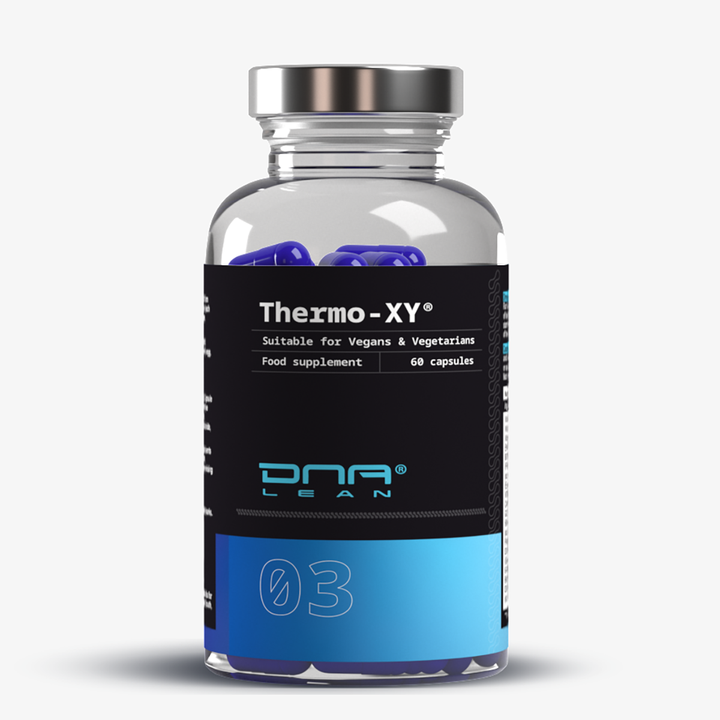
£34.99
Whey protein
Whey protein is a highly nutritious source of protein and consistently scores higher than any other protein source on most protein evaluation methods (20).
The efficacy of whey protein on athletic performance and recovery is well-documented (21), which is why whey protein supplements can be a useful addition to any diet, let alone the ketogenic diet.
Whey protein is also a powerful modulator of muscle protein synthesis (MPU) and thus can be used to not only preserve lean body mass, but also to stimulate muscle hypertrophy (22).
However, despite the nutritional value of whey protein, there is a concern with consuming whey proteins while in ketosis because of their insulinogenic properties (23).
It is generally recognised in physiological-science that adding fat to a meal slows down the digestion of food stuffs (24).
Therefore insulin secretion caused by whey protein can be attenuated by the co-ingestion of nutritious omega oils such as flaxseed oil or Udo’s oil.
Pro Tip – For a nutritious keto snack, try adding 20 ml of Udo’s oil to 30 grams of whey protein, mixed together in cool filtered water.
LEARN MORE > Protein Powder: An Ultimate Buyers Guide (2019)
Free sample Keto Meal Plan for 1 Week
Here is a sample 7 day ketogenic meal plan for beginners, based on 3 daily meals; breakfast, lunch and dinner, including a daily dessert. While this diet plan is for 1 week, you can repeat the plan and follow it for 3 weeks or 30 days.
Try experimenting and add in various herbs, seasonings, or Indian spices to make your own keto recipes.
This sample keto meal plan for beginners is also available in a printable pdf download here.
Monday
Breakfast: Poached eggs, salmon & avocado
Lunch: Yellow fin tuna & chopped mixed salad
Mixed salad (Cherry tomatoes, cucumber, red lettuce, celery, olives, French beans, feta cheese)
Salad dressing (2 Dessert spoons of flaxseed oil, teaspoon of French mustard).
Dinner: Beef steak with garlic butter, broccoli & asparagus.
Dessert: Strawberries, blackberries and walnuts.
Tuesday
Breakfast: Mixed vegetable omelette cooked in butter
(Spinach, peppers, tomatoes, onion)
Lunch: Chicken and goats cheese salad
(Avocado, green beans, olives, lettuce, tomato, cucumber)
Dinner: Salmon and mixed vegetables
(Mushrooms, broccoli, okra, artichoke hearts).
Dessert: Strawberries and raspberries with unsweetened natural yoghurt and 2 dessert spoons of Udo’s oil.
Wednesday
Breakfast: Bacon, avocado and grilled aubergine
Lunch: Jumbo shrimp & zesty chopped lime salad
(Red onion, tomato, avocado, jalapeno, freshly squeezed lime juice, fresh coriander, salt & black pepper to taste)
Dinner: Mackerel & stir-fried veggies in garlic butter
(Broccoli, 1/2 small onion, diced red pepper, 2 pieces sun-dried tomatoes, mashed avocado).
Dessert: Walnuts & strawberries topped with fresh natural yoghurt and 1 dessertspoon of flaxseed oil.
Thursday
Breakfast: Keto-smoothie
(1-2 Scoops of vanilla whey protein, fresh unflavoured natural yoghurt, frozen raspberries, frozen strawberries, 2 dessert spoons of Udo’s oil, 200 ml cool filtered water; blend).
Lunch: Steak tartare
(Finely chopped Prime Beef tenderloin, egg yolk, extra virgin olive oil, minced cornichon, minced shallot, minced capers, minced fresh flat leaf parsley, dijon mustard, freshly squeezed lemon juice, salt & pepper to taste).
Dinner: Keto salmon cakes & courgette spaghetti
(Salmon, egg, jalapeno, plain mayo, red onion, fresh garlic, teaspoon of chilli powder, salt and pepper to taste)
Dessert: Keto Chocolate Hazelnut Truffles
(Whole roasted hazelnuts, unsweetened cocoa solids, ground almonds, coconut oil, coconut cream)
Friday
Breakfast: Keto pancakes with strawberries & cream
(Almond flour, soft cream cheese, eggs, lemon zest)
Lunch: Homemade bun-less beef burger topped with lettuce, tomato, sliced cheese.
Side salad (Cucumber, celery, olives, red onion)
Salad dressing (2 dessert spoons of flaxseed oil, teaspoon of French mustard).
Dinner: Baked cod in parmesan cheese and a lemon garlic sauce with steamed collard greens
(Cod, grated parmesan cheese, chopped fresh parsley, 1/2 teaspoon smoked paprika, salt & pepper to taste)
Sauce: (Fresh minced garlic, dash of dry white wine, freshly squeezed lemon juice, butter).
Dessert: Mascarpone mouse and berries
(Mascarpone cheese, whipping cream, vanilla essence, blueberries & strawberries)
Saturday
Breakfast: Bacon, mushroom & spinach omelette.
Lunch: Broccoli cheese soup
(Broccoli florets, carrot, cream cheese, freshly grated cheddar, fresh minced garlic, smoked paprika, mustard powder, onion powder, cayenne pepper, chicken stock cube, salt & pepper to taste)
Dinner: Parmesan crusted salmon and mixed vegetables
(Asparagus, mushrooms, mixed bell peppers)
Dessert: Keto Lemon bars
(Almond flour, stevia, salt, coconut oil, egg, vanilla essence, lemon juice, lemon zest)
Sunday
Breakfast: Keto toast with poached egg and mashed avocado
(Bread made with almond flour)
Lunch: Salmon ceviche
(Cubed salmon fillet, finely chopped cucumber, chopped spring onions, lettuce leaves, coriander leaves, finely grated ginger, freshly squeezed lime juice, extra virgin olive oil, dash of sesame oil, salt & pepper to taste).
Dinner: Mediterranean sardines & vegetables
(Sardines, butter, garlic, lemon, oregano, rosemary, paprika, thyme, sage, salt & pepper to taste)
(Zucchini, Brussels sprouts, baby bok choy, mixed bell peppers, butter, Parmesan cheese, Italian herbs, salt & pepper to taste).
Dessert: Keto nut chocolate
(Cacao butter, unsweetened cocoa solids, cream, pistachios, almonds, pecans, freeze-dried raspberries)
Ketogenic diets support weight loss
Despite the ubiquitous weight loss coaches and their nonsensical mantra about weight loss and calorie deficits, many a folk following the ketogenic diet lose weight without counting any calories whatsoever.
This is because the human body has the ability to utilise a number of metabolic pathways that allow for the synthesis of energy yielding fuel sources.
When carbohydrates become unavailable, the main metabolic pathway is ketosis.
Unlike glucose which stimulates insulin and the accumulation of body fat, ketones provide energy independent of insulin secretion. In terms of fat and weight loss, this is hugely significant.
Glucose is a source of “fast” energy and if you are not burning it at a fast enough rate, it can soon become excess to your cells’ energy requirements.
Excess glucose stimulates the production of fatty acids which are then further synthesised into triglycerides (3 fatty acid molecules hooked on to one glycerol molecule).
Triglycerides are deposited into your cells, around your organs, or accumulate in adipose tissues as stored fat mass. Invariably, sugar consumption leads to high blood triglyceride levels, which is associated with obesity and cardiovascular disease.
When in ketosis, all of the above glucose signalled mechanisms are instantly shutdown. Your metabolism starts to breaks down triglycerides released from adipose tissues that yield fatty acids and converts them to ketone bodies.
Triglyceride storage is then down-regulated, but also fat burning gets up-regulated. If formulated correctly, the ketogenic diet can swiftly turn your body into a fat burning machine.
As you can imagine, eating a ketogenic diet can induce rapid weight loss, and beginners typically report losing the largest amounts of weight when they first start. The initial rapid weight loss is partly from water loss caused by depleted glycogen stores, but also includes some fat loss.
LEARN MORE > Calorie Counting For Weight Loss: Is It Effective?
Ketogenic Diets for Prediabetes and Diabetes
Diabetes is a health condition where the body is unable to properly manage levels of blood glucose.
In healthy non-diabetic people, the beta cells of the Pancreas produce insulin which helps to regulate blood glucose by removing excess from the blood and delivering it to the various cells of the body for energy.
In people with any form of diabetes (prediabetes, type 1 diabetes, type 2 diabetes) insulin based blood glucose regulation becomes impaired, and in extreme cases can result in the accumulation of abnormally high blood glucose.
Consequently the cells of the body become energy-deficient, lacking in glucose, which triggers ketosis. People with type 2 diabetes have an additional risk, if the condition is not properly managed, of diabetic ketoacidosis.
Diabetic ketoacidosis is the uncontrolled production of ketone bodies which disrupts the body’s acid-base stasis and results in metabolic acidosis. This is a very dangerous health condition and requires medical intervention.
The ketogenic diet through its action on lowering blood glucose and insulin has been shown by various studies to be helpful for managing diabetes.
For instance, one study in particular demonstrated the effectiveness of the ketogenic diet in improving glycemic control of type 2 diabetic patients.
In fact, the majority of patients were able to discontinue diabetic medications (25).
Additional Health Benefits of the Ketogenic diet
Since the 1920’s, the keto diet has sparked no end of scientific interest and has become a profound area of research. In fact today physiological-science currently believes insulin resistance to be a major contributing factor to various health conditions.
The ketogenic diet and its ability to improve insulin metabolism is well-documented, which is one of the major reasons it has recently grown so much in its popularity.
The keto is used as a tool to help treat many and various health conditions, some of these include:
- Epilepsy:
Because epilepsy is a metabolic disease, it is thought that a ketogenic diet, through its effect on energy metabolism, can be used as a potential treatment for epilepsy. There is a growing body of evidence that gives credence to this proposition (26). Today, ketogenic-style diets are observed to significantly reduce the prevalence of seizures in epileptic children. - Heart disease:
When formulated correctly, the ketogenic diet is known to improve several risk factors that are associated with disease of the heart, such as blood pressure, blood glucose, obesity, and LDL cholesterol (27, 28). - Cancer:
Every cell in your body needs energy, including cancerous cells. Cancer, although dynamic in its metabolism, receives its energy primarily through glycolysis. Therefore, scientists have proposed that eating little to no sugar and carbohydrate, as with a ketogenic style diet, may slow or retard tumour growth. This is known as the Warburg effect (29, 30,31,32). - Alzheimer's disease:
Neurodegenerative diseases in general, are associated with oxidative stress and mitochondrial dysfunction. Both play a vital role in the pathophysiology of Alzheimer's disease. Ketone bodies offer neuroprotection through their action on cellular energy metabolism. They also provide more energy for the brain per unit of oxygen than glucose (33). - Polycystic ovary syndrome:
Insulin resistance is denoted by the improper function of cellular glucose transport via insulin, and plays a key role in the pathophysiology in PCOS. The ketogenic diet is able to lower both blood glucose and insulin, which is why scientists believe it to be a promising treatment for PCOS (34).
Further research into these areas of disease and potential treatment, is still required.
Who should NOT do a ketogenic diet?
The ketogenic lifestyle is suitable for most people. Nevertheless there are some people who may not be suited to a low carb high fat diet. Here are 4 basic groups that require further consideration before adopting a ketogenic diet.
- Users of diabetic medication such as insulin or metformin.
- Pregnant or breast feeding.
- Users of medication for high blood pressure.
- If you have a very low body weight/BMI.
If you fall into any of the above groups and are considering following a ketogenic diet, it is important to seek advice from a qualified medical professional first.
Are ketogenic diets safe? (Potential Side Effects)
Although the short-term health benefits of the ketogenic diet are well-documented, the longer term effects are lesser known. In the short-term the keto diet is known to have various potential side effects.
When you suddenly stop eating sugar and carbohydrates, your body has to adapt and respond by shifting into ketosis, this takes some time. The first 2-5 days of eating little to no carbohydrates, usually proves to be the hardest time for most people.
During this adaptation period your body has to first exhaust its carbohydrate stores, gradually switching its energy metabolism from glycolysis to gluconeogenesis, and then ketosis. As your body changes modes it is not uncommon to experience a phenomenon known as the keto-flu.
Keto-flu symptoms include:
- Fatigue
- Lack of motivation
- Mild headache
- Reduced concentration or “brain fog"
- Irritability
- Dizziness
- Increased hunger
- Disrupted sleep
Your brain is the most energy-demanding organ of all. The problem is that it cannot directly use fat for fuel. Rather, it can only utilise either glucose or ketones.
It is for this reason that the initial period of glucose starvation significantly affects your brain, mood and energy levels.
These keto-flu symptoms are not uncommon and should naturally subside as your body adapts and becomes efficient at breaking down fats to make ketones for fuel.
One way you can avoid the keto flu is to not just stop eating carbohydrate. Instead you can transition by gradually reducing carbohydrates, that is by removing all processed sugar and carbohydrates with a high glycemic load.
However, doing so will prolong the time it takes to reach ketosis.
Other potential drawbacks
Dehydration & Electrolyte imbalance
Ketosis can also alter the water and mineral balance of your body. Glucose stored as glycogen in your liver and muscles, is stored with water. In fact, for every 1 gram of glycogen, your body store 3 grams of water (35).
Depletion of cellular glycogen stores prior to ketosis, consequently leads to water loss, which can result in a loss and imbalance of electrolytes. Depending on how your ketogenic diet is constructed, dehydration and cramping can sometimes occur.
This is why it is important to stay hydrated by drinking plenty of fluids along with paying attention to your intake of plant-based mineral rich foods that contain both sodium and potassium.
Constipation
Constipation and other gastrointestinal issues such as diarrhoea are other common side-effects of a poorly constructed ketogenic diet. This is because eating fewer carbohydrates means that you can no longer eat starchy vegetables that are rich in fibre.
It is important to replace fibre from non-starchy vegetables. Failure to do so may result in constipation.
Eating a varied diet with a good mixture of both soluble and insoluble fibre, helps keep the intestines moving and reduces the risk of constipation (36).
Bad breath
On a very strict low carbohydrate ketogenic diet, some people experience bad breath that is distinctly different to halitosis. Keto bad breath is a result of high levels of the ketone acetone; a highly volatile compound that quickly evaporates to create a strong smelling odour.
Many a chemist will vouch for the hallmark smell of acetone; it’s pungent, fruity and is akin to the smell of nail polish remover. Keto bad breath is a sign that you are in a strong state of ketosis.
Here are some things you can do to reduce the smell:
Assess water and fluid intake
Acetone is excreted from the body via exhalation and urination. Drinking plenty of water can help flush away excess levels of acetone.
Assess total protein intake
Reducing or eliminating carbohydrate can in some cases be overcompensated for, by eating too much protein. Digesting protein requires a hydrolysis reaction that uses water to break open peptide bonds between proteins.
Therefore eating more protein can also cause mild dehydration which can contribute toward bad breath.
Assessing your daily protein intake to determine if you are eating too much protein is another key thing you can do to help combat bad breath.
Maintain oral hygiene
As simple as it sounds, regular teeth brushing and using mouthwash in between meals, where possible, may just do the trick.
Down-regulate ketosis
If you find that the problem of bad breath persists long-term, it may be that your body is making too many ketones.
You can take a quick test to measure your ketone level. The most accurate way of testing for ketones is to evaluate concentration in your blood, but you can also use keto testing strips that measure the concentration in your urine.
Public Health England have classified the following ranges of ketone levels for diabetics:
- ≤ 0.6mmol/L is a normal reading
- 0.6 to 1.5mmol/L means you're at a slightly increased risk of DKA and should test again in a couple of hours
- 1.6 to 2.9mmol/L means you're at an increased risk of DKA and should contact your diabetes team or GP as soon as possible
- ≥ 3mmol/L means you have a very high risk of DKA and should get medical help immediately
However, for healthy non-diabetic individuals, optimal nutritional ketosis has a range of 0.6-3 mmol/L.
If your ketone level becomes too high, you can quickly remedy by down-regulating ketosis; simply eat slightly more carbohydrate.
Pro Tip - Eat an additional 20-30 grams of carbohydrates per day to combat bad breath.
Conclusion
Emerging research on the ketogenic diet is helping to uncover novel biological and metabolic benefits associated with eating little to no carbohydrate.
Leveraging the power of nutritionally induced ketosis and applying its associated therapeutic mechanisms in a relevant and practical way can help to improve medical conditions such as obesity, diabetes, epilepsy and polycystic ovary syndrome.
Nevertheless, going keto is very restrictive and can be difficult for a substantial amount of people to follow. It is important to consult with a qualified nutritionist or doctor, who can properly construct a balanced diet tailored to your requirements and monitor your progress.
If you are considering following a ketogenic diet don’t make it an excuse to eat unhealthy low-carbohydrate processed chemical laden junk foods, high in saturated and trans fats.
Rather, eat a variety of organic whole foods, including an assortment of fresh low-carbohydrate fruits and vegetables.
Food is medicine, and medicine is food. Irrespective of your reason for adhering to a keto lifestyle, eat for health first, everything else will follow.
Due to the energy efficacy of ketone bodies, a ketogenic diet may also have additional benefits for endurance athletes who exercise and compete for prolonged and sustained periods of time.
However a very low carbohydrate keto diet is probably sub-optimal for strength and bodybuilding athletes who wish to gain large amounts of lean muscle mass and bodyweight.
Scientific Reference Data:
- A Ketone Ester Drink Lowers Human Ghrelin and Appetite.
https://www.ncbi.nlm.nih.gov/pubmed/29105987 - Do ketogenic diets really suppress appetite? A systematic review and meta-analysis.
https://www.ncbi.nlm.nih.gov/pubmed/25402637 - Measurements of Gluconeogenesis and Glycogenolysis: A Methodological Review
https://www.ncbi.nlm.nih.gov/pmc/articles/PMC4657587/ - Multi-dimensional roles of ketone bodies in fuel metabolism, signaling, and therapeutics
https://www.ncbi.nlm.nih.gov/pmc/articles/PMC5313038/ - Ketogenic Diet
https://www.ncbi.nlm.nih.gov/books/NBK499830/ - Multi-dimensional roles of ketone bodies in fuel metabolism, signaling, and therapeutics
https://www.ncbi.nlm.nih.gov/pmc/articles/PMC5313038/ - Long-Chain Omega-3 Polyunsaturated Fatty Acids May Be Beneficial for Reducing Obesity—A Review
https://www.ncbi.nlm.nih.gov/pmc/articles/PMC3257626/ - Dietary saturated fat intake and atherosclerotic vascular disease mortality in elderly women: a prospective cohort study.
https://www.ncbi.nlm.nih.gov/pubmed/25948671 - Trans fats—sources, health risks and alternative approach - A review
https://www.ncbi.nlm.nih.gov/pmc/articles/PMC3551118/ - Short- and medium-chain fatty acids in energy metabolism: the cellular perspective
https://www.ncbi.nlm.nih.gov/pmc/articles/PMC4878196/ - Emerging Nutrition Science on Fatty Acids and Cardiovascular Disease: Nutritionists’ Perspectives
https://www.ncbi.nlm.nih.gov/pmc/articles/PMC4424771/ - Effect of low-carbohydrate-ketogenic diet on metabolic and hormonal responses to graded exercise in men.
https://www.ncbi.nlm.nih.gov/pubmed/8807563 - On the Metabolism of Exogenous Ketones in Humans
https://www.ncbi.nlm.nih.gov/pmc/articles/PMC5670148/ - Efficacy and safety of exogenous ketone bodies for preventive treatment of migraine: A study protocol for a single-centred, randomised, placebo-controlled, double-blind crossover trial.
https://www.ncbi.nlm.nih.gov/pubmed/30654835 - Ketogenic diets and physical performance
https://www.ncbi.nlm.nih.gov/pmc/articles/PMC524027/ - Creatine: the nutritional supplement for exercise - current concepts
https://www.ncbi.nlm.nih.gov/pubmed/12184144 - Boosting fat burning with carnitine: an old friend comes out from the shadow
https://www.ncbi.nlm.nih.gov/pmc/articles/PMC3099008/ - CARNITINE TRANSPORT AND FATTY ACID OXIDATION
https://www.ncbi.nlm.nih.gov/pmc/articles/PMC4967041/ - A Review of Natural Stimulant and Non‐stimulant Thermogenic Agents
https://www.ncbi.nlm.nih.gov/pmc/articles/PMC5067548/ - Protein – Which is Best?
https://www.ncbi.nlm.nih.gov/pmc/articles/PMC3905294/ - Efficacy and Safety of Whey Protein Supplements on Vital Sign and Physical Performance Among Athletes: A Network Meta-Analysis
https://www.ncbi.nlm.nih.gov/pmc/articles/PMC6491698/ - Protein Intake and Muscle Function in Older Adults
https://www.ncbi.nlm.nih.gov/pmc/articles/PMC4394186/ - The insulinogenic effect of whey protein is partially mediated by a direct effect of amino acids and GIP on β-cells
https://www.ncbi.nlm.nih.gov/pmc/articles/PMC3471010/ - Effect of added fat on the plasma glucose and insulin response to ingested potato given in various combinations as two meals in normal individuals.
https://www.ncbi.nlm.nih.gov/pubmed/7882816 - A low-carbohydrate, ketogenic diet to treat type 2 diabetes
https://www.ncbi.nlm.nih.gov/pmc/articles/PMC1325029/ - Ketogenic Diet and Epilepsy: What We Know So Far
https://www.ncbi.nlm.nih.gov/pmc/articles/PMC6361831/ - Effects of Ketogenic Diets on Cardiovascular Risk Factors: Evidence from Animal and Human Studies
https://www.ncbi.nlm.nih.gov/pmc/articles/PMC5452247/ - Systematic review of randomized controlled trials of low-carbohydrate vs. low-fat/low-calorie diets in the management of obesity and its comorbidities.
https://www.ncbi.nlm.nih.gov/pubmed/18700873 - The calorically restricted ketogenic diet, an effective alternative therapy for malignant brain cancer
https://www.ncbi.nlm.nih.gov/pmc/articles/PMC1819381/ - Role of glucose and ketone bodies in the metabolic control of experimental brain cancer
https://www.ncbi.nlm.nih.gov/pubmed/14520474 - Ketogenic Diets and Cancer: Emerging Evidence
https://www.ncbi.nlm.nih.gov/pmc/articles/PMC6375425/ - Ketogenic diet in cancer therapy
https://www.ncbi.nlm.nih.gov/pmc/articles/PMC5842847/ - Role of Ketogenic Diets in Neurodegenerative Diseases (Alzheimer’s Disease and Parkinson’s Disease)
https://www.ncbi.nlm.nih.gov/pmc/articles/PMC6356942/ - Effects of a ketogenic diet in overweight women with polycystic ovary syndrome.
https://www.ncbi.nlm.nih.gov/pubmed/32103756 - Relationship between muscle water and glycogen recovery after prolonged exercise in the heat in humans.
https://www.ncbi.nlm.nih.gov/pubmed/25911631 - Dietary fibre intakes and reduction in functional constipation rates among Canadian adults: a cost-of-illness analysis
https://www.ncbi.nlm.nih.gov/pmc/articles/PMC4677277/



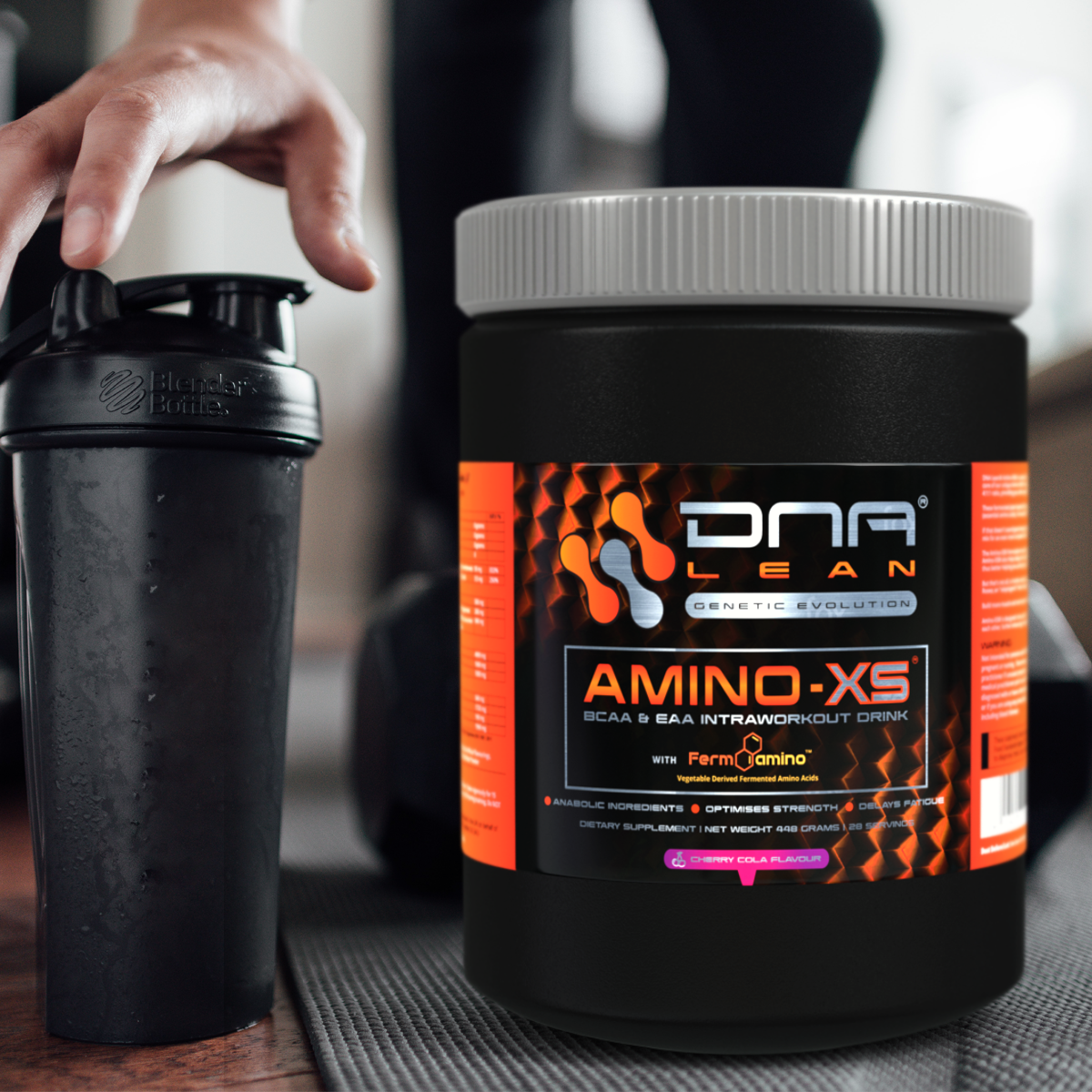

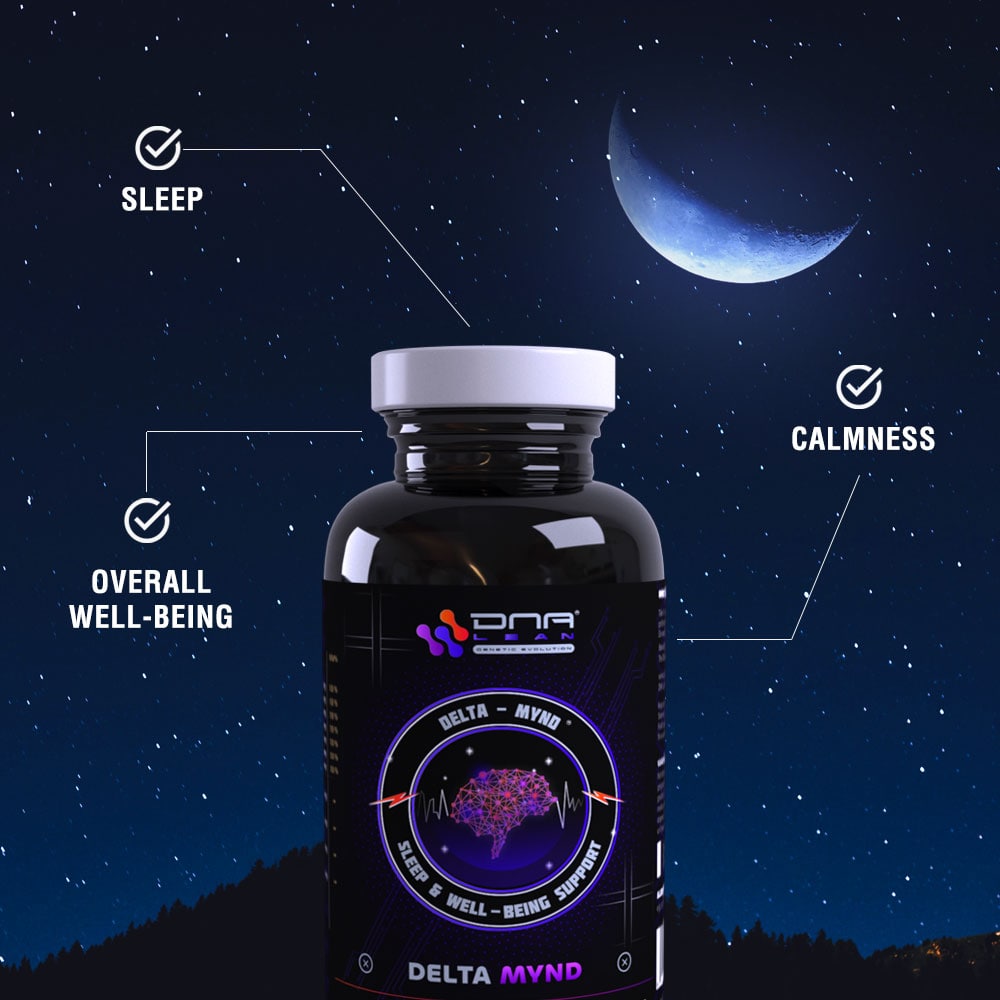

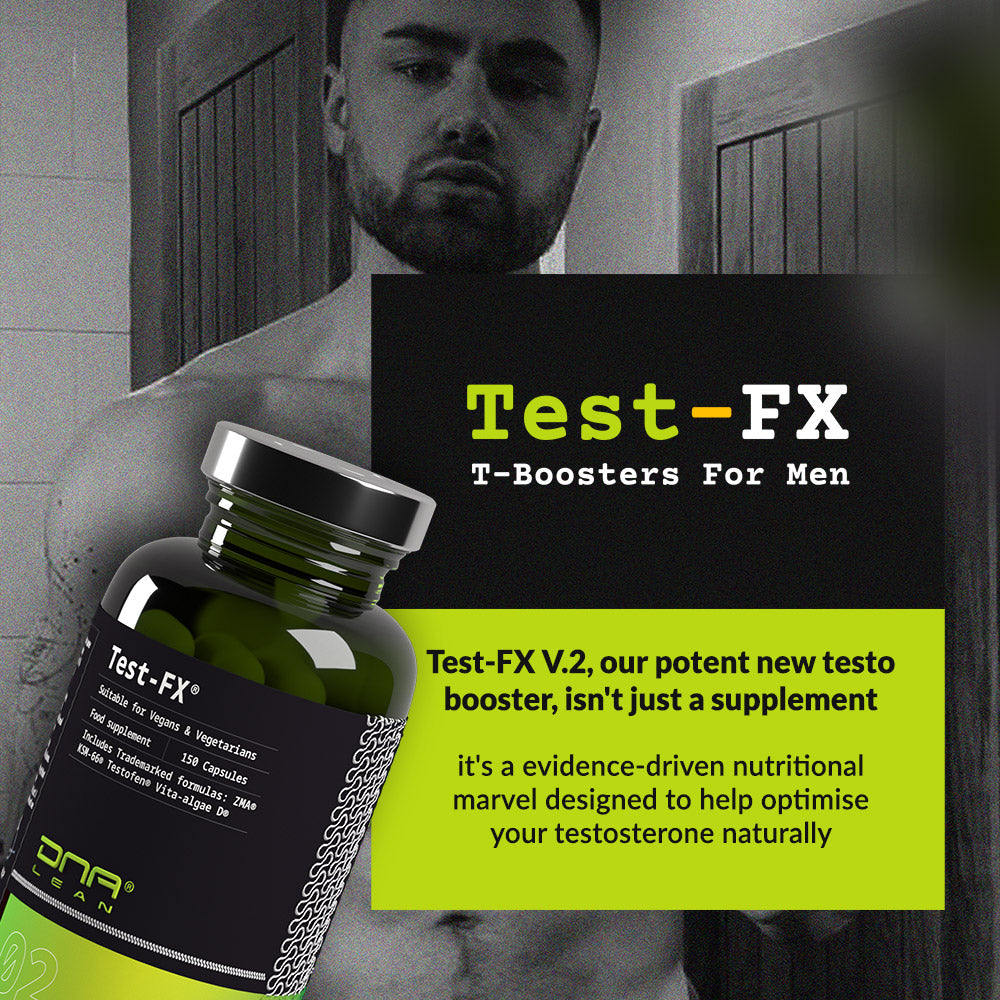


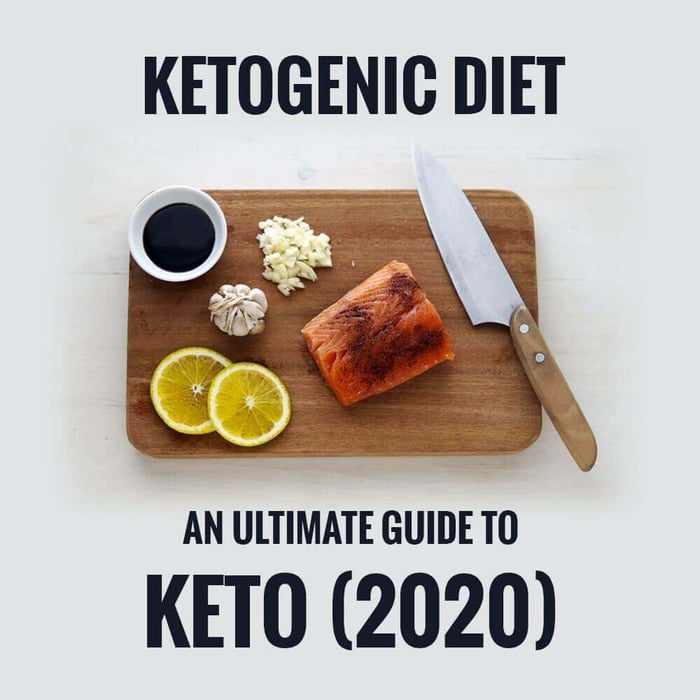

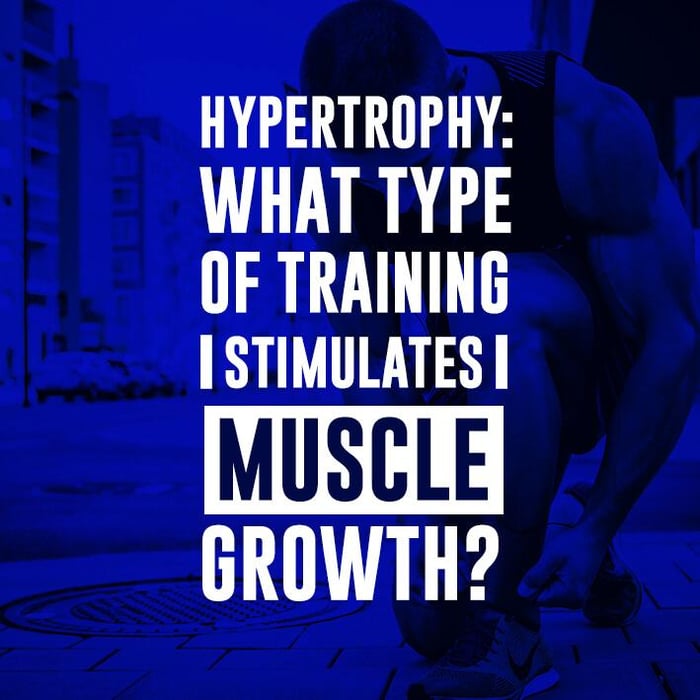


 USD
USD
 EUR
EUR